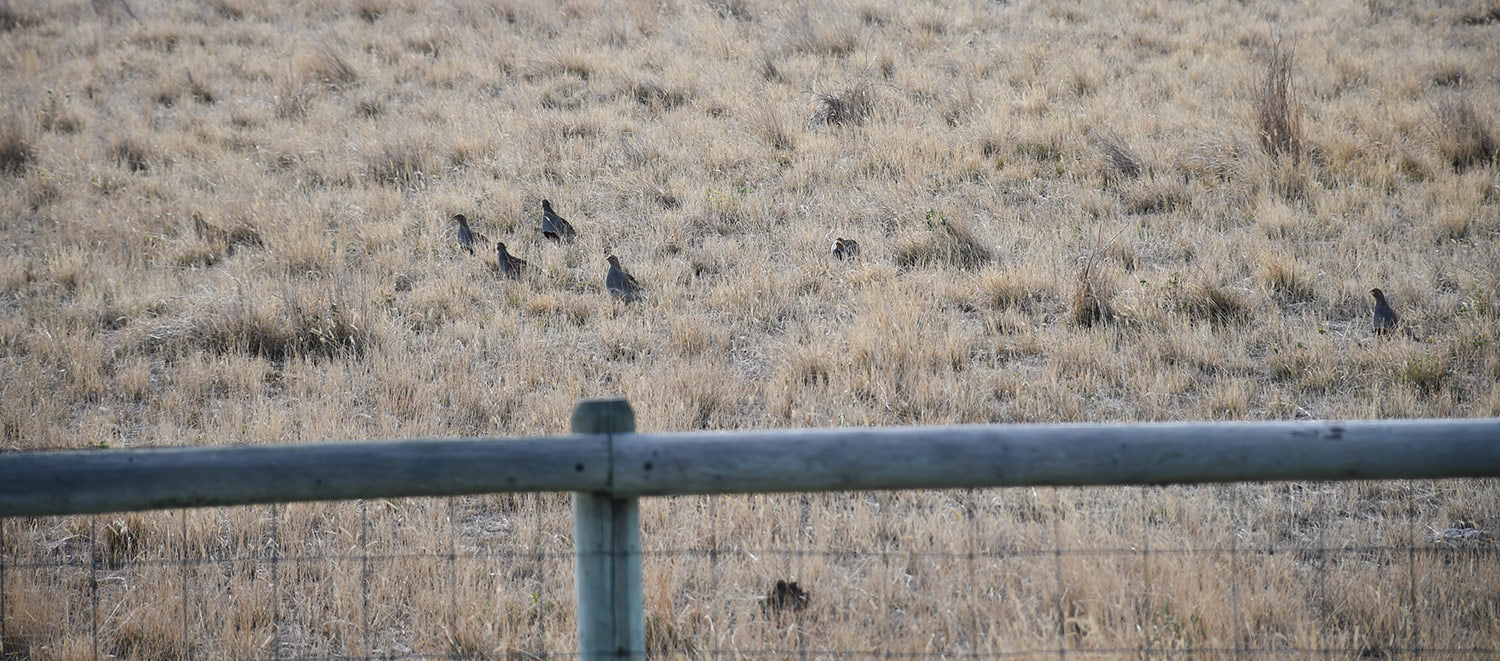
Montana's Upland Birds
We are lucky to have some incredible options for upland bird hunting here in Montana. Our prairies, foothills and mountains are full of multiple species of grouse, partridge and pheasant.
Across our hunting areas in Big Timber and Lewistown, we focus on Sharptail Grouse, Sage Grouse, Hungarian Partridge and Ring-Neck Pheasant. Learn more on the birds below.
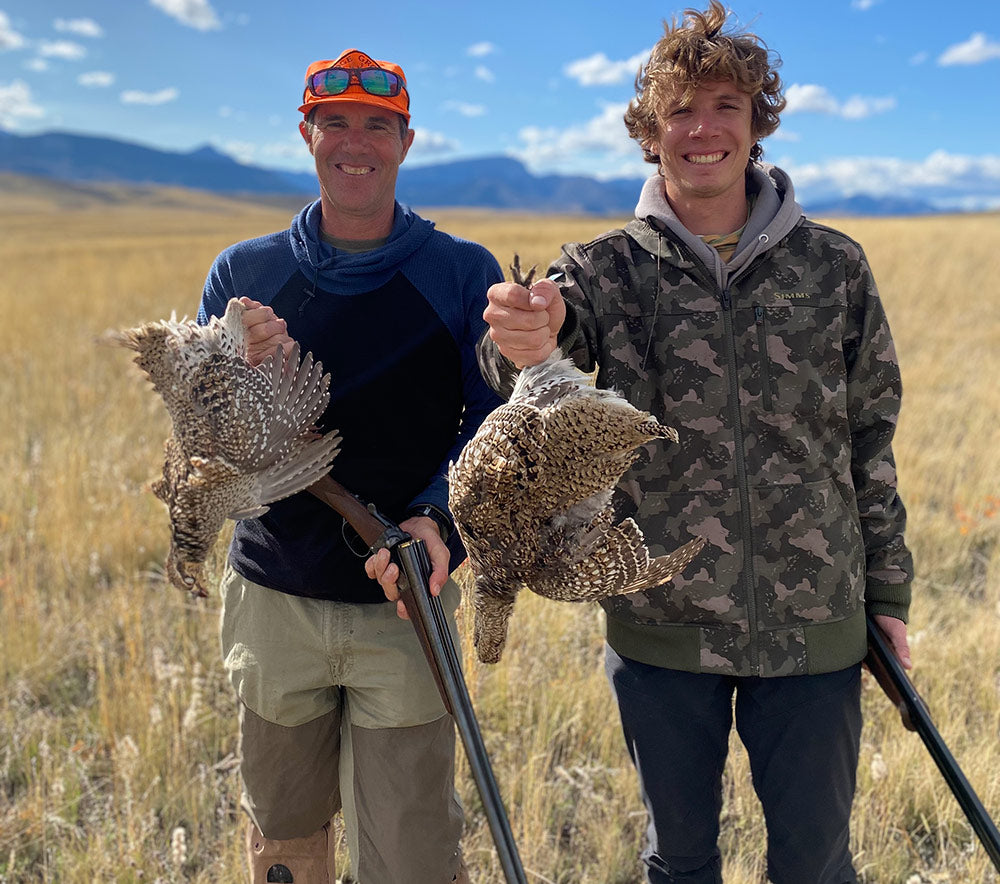
Sharptail Grouse
The Sharp-tailed Grouse, Sharptail, or “Sharpie”. This is one of Montana’s premier upland birds. Native to the prairies of North America, it can be found from Kansas all the way to Alaska, and once ranged even wider. Sharptail are one my favorite birds to hunt with pointing dogs. They live in beautiful places, and are never completely predictable. They tend to move around a lot, for food and shelter. When I think of Montana’s rolling prairie and coulee’s, this is the bird that comes to the front of my mind. They can be found in singles or in large groups. We most commonly find them in groups of 3 to 6 for most of the season, but sometimes find them in groups of 12 or more. They can be challenging for a dog to find and handle correctly. Sharptail prefer a medium cover most of the time, and often hold pretty well for a point.
I prefer #6 shot for this bird. They are long distance fliers, and have fairly dark breast meat. This is my personal favorite upland bird to eat. Montana’s current daily limit is four.
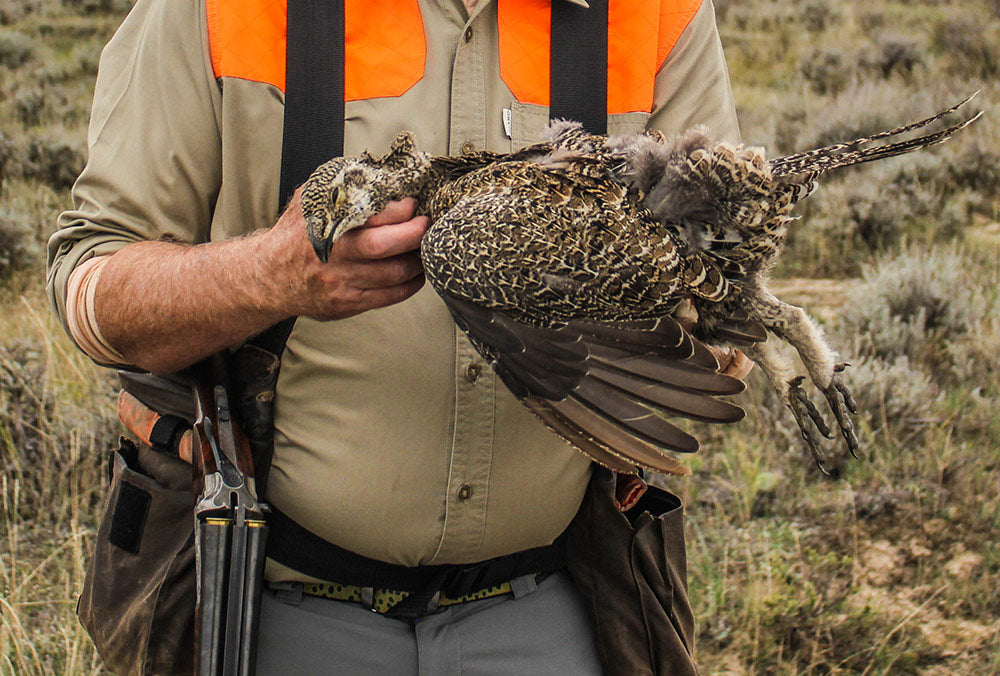
Sage Grouse
The Sage Grouse. I love this bird, Iconic of the wild American west, it is often misunderstood and overlooked. The largest of the north american grouse species, it used to inhabit vast areas of north America, and has now mostly vanished along with its wild native habitat. Sage grouse are now reduced to small pockets of the west free from development. Sage grouse can be a difficult bird to hunt with dogs, often flushing out of range and flying long distances. They will run through the sage, and blend in remarkably well. A flush will awe you with the sheer size of the bird, and the speed they get moving. They are like modern NFL athletes, big and surprisingly fast. We typically find them in very specific places, with ideal sage brush and wide-open spaces in all directions. They are found in singles, or small groups similar to sharptail. Young birds make good table fare. I believe hunting is conservation, and hunters who care do more to ensure the survival of this bird than anyone else. Montana has a fairly stable population, and we hunt them in the month of September only. Montana’s current bag limit is two per day.
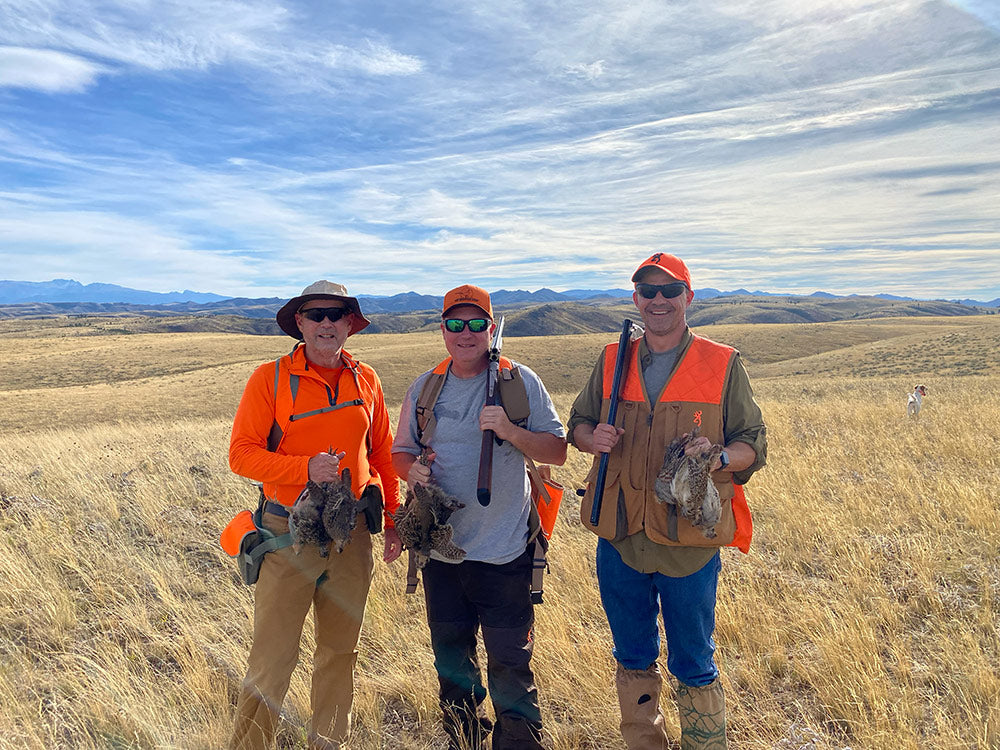
Hungarian Partridge
The Grey Partridge, Hungarian Partridge, “Hun”. This is the bird of countless stories and articles throughout Europe and North America. A covey bird, that likes short cover and structure. They love to run, and inhabit a wide variety of cover. Big Timber has very good habitat suitable to these birds. Along with stunning vistas in the back drop, the eruption of the covey to wing is something to behold. We find these birds in the high steppe, on the agricultural flats, and in the prairie. They like broken country with hills and coulees. The love old buildings and abandoned machinery and hay stacks. These are a very good bird for pointing dogs, challenging, yet will hold tight a lot of the time. They make very good table fare, and great feathers for tying flies.
We find them in coveys averaging 4-12 birds, some large coveys can be over 16 birds. On a good year we can find 6 or more coveys a day. Montana’s current daily limit is eight.
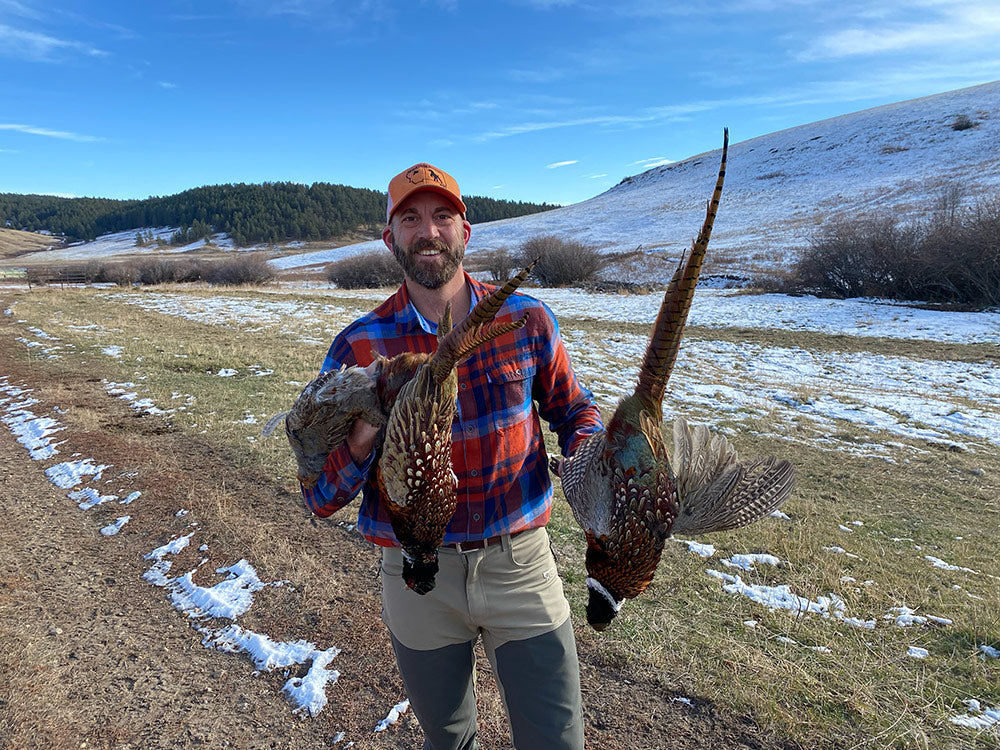
Ring-Neck Pheasant
Ring-necked Pheasant, pheasant, “ditch parrot”. This is one tough and wily adversary when pursued in the wild. Introduced to North America in the 1880’s, this is one of the most widely recognized upland birds in the world. In Montana we find them in brushy creek bottoms or draws, typically near agriculture. They prefer to run like Pre Fontane through the cover to escape, but can burst into the air and reach speeds of near 40mph. You never really know what you are going to get hunting them. The roosters usually run and run, rather than hold to a point, forcing the dog to relocate several times, or accidentally flush the bird out of shotgun range. Once bagged, they are good table fare, and the roosters are unbelievably beautiful birds.
Montana’s current daily limit is three.
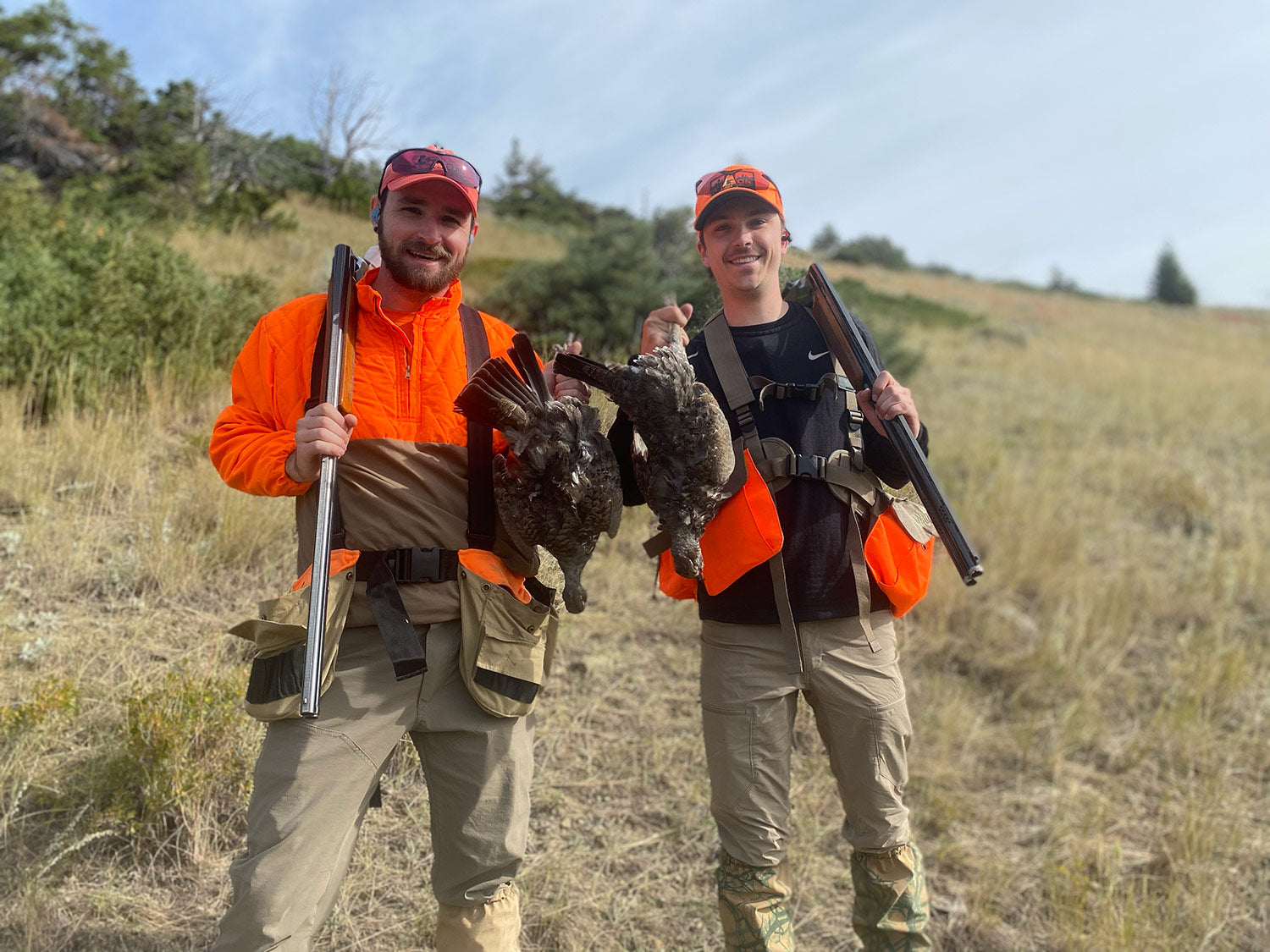
Blue Grouse
The Blue Grouse, Dusky Grouse, or “Blues”. These are a rare treat for the traditional upland country, due to their usual habitat. They are considered “Mountain Grouse”, being found at higher elevations and denser forest cover than what we normally hunt. I have seen lots of them wintering over Seven thousand feet while I was hunting Mountain Goats. However, we do have some ranches that offer the right habitat for successful hunting in early September. They often hold very well for a point, and make for a good target being the second largest of our grouse species. Mostly considered an incidental quarry, we can target them successfully in early September. They are very good to eat. Montana currently allows for three daily, mixed with other mountain grouse such as Ruffs.
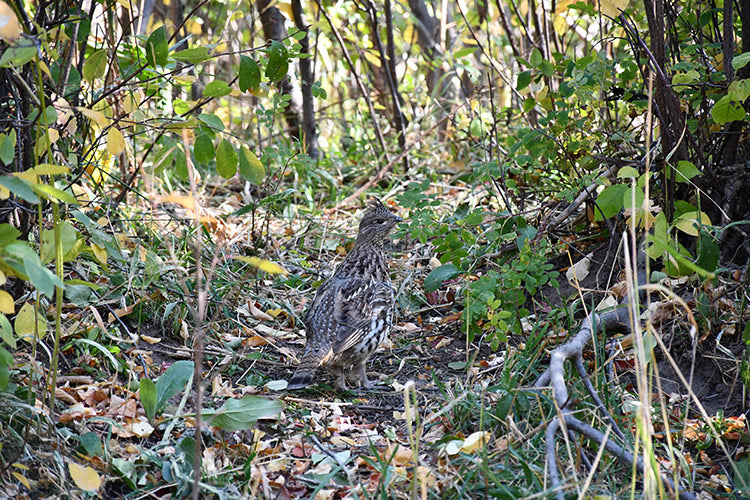
Ruffed Grouse
The Ruffed Grouse. “Ruff’s”. This is probably the most recognizable and written about of the grouse species. It is “The drummer in the woods”. The early conservationist Aldo Leopold wrote of the Ruffed Grouse, “The autumn landscape in the north woods is the land, plus a red maple, plus a Ruffed Grouse. In terms of conventional physics, the grouse represents only a millionth of either the mass or the energy of an acre yet subtract the grouse and the whole thing is dead.” This is an incidental quarry for us, due to their unique habitat not being a typical part of the prairie uplands. We find them in Creek bottoms, usually very thick with foliage. They are a fast flyer, and always seem to know how to put the trees between you and them. Often we have some Ruffs visit us in “Dog Hollow” where we camp in Big Timber. They make excellent table fare. Montana currently allows for three daily, mixed with other mountain grouse such as Blues.
